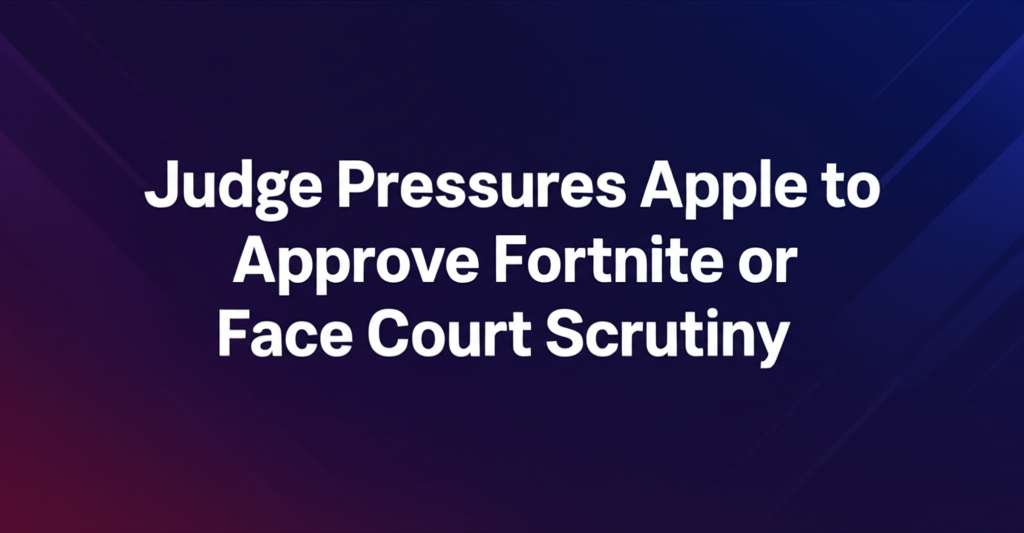The Precipitous Fall of Builder.ai: From Unicorn Ambition to Insolvency
In the often-turbulent world of technology startups, stories of rapid ascent and spectacular valuations are common. Equally common, though perhaps less celebrated, are the narratives of companies that fail to sustain their momentum, succumbing to market pressures, internal issues, or a combination of both. The recent news surrounding Builder.ai, the Microsoft-backed AI software company, serves as a stark reminder of this reality. Once a celebrated 'unicorn' with a valuation exceeding $1 billion and substantial funding, the company has confirmed it is entering insolvency proceedings, appointing an administrator to navigate its precarious financial state.
This development marks a significant downturn for a company that positioned itself at the forefront of AI-driven software development, promising to democratize app and website creation through its innovative platform. The confirmation from a company spokesperson to TechCrunch underscores the severity of the situation, highlighting the inability to recover from “historic challenges and past decisions that placed significant strain on its financial position.” The immediate priority, according to the company, is to support employees, customers, and partners through this difficult transition and work with administrators to explore any viable options for parts of the business.
The Rise and Promise of Builder.ai
Builder.ai, initially operating under the name Engineer.ai, emerged during a period of intense excitement surrounding artificial intelligence and its potential to disrupt traditional industries. The core promise was compelling: leverage AI to dramatically simplify and accelerate the process of building custom software applications and websites. This vision resonated strongly with investors, leading to significant funding rounds that propelled the company to unicorn status, accumulating over $450 million in total investment, with notable backing from giants like Microsoft.
The platform aimed to abstract away the complexities of coding and project management, allowing businesses and individuals to describe their desired application using natural language or simple interfaces. The AI would then, theoretically, handle the heavy lifting, assembling pre-built components and orchestrating development tasks. This approach appealed to a broad market, particularly small and medium-sized businesses and non-technical entrepreneurs who needed digital solutions but lacked the resources or expertise for traditional development processes.
The narrative of an AI-powered factory for software creation was powerful and aligned perfectly with the prevailing tech trends. It painted a picture of efficiency, speed, and cost-effectiveness that traditional software agencies or in-house development teams struggled to match. This potent combination of a compelling vision, a massive potential market, and significant investor confidence fueled its rapid growth and high valuation.
Early Cracks and the 'AI vs. Human' Controversy
However, even during its ascent, Builder.ai (then Engineer.ai) faced scrutiny that hinted at underlying challenges. A significant controversy arose concerning the extent to which its platform was truly automated by AI versus its reliance on human developers. Reports, notably from The Wall Street Journal, suggested that the platform, despite being marketed as largely automated, heavily depended on human engineers working behind the scenes to fulfill development requests.
This raised fundamental questions about the company's core technology and its transparency with customers and investors. Was it a groundbreaking AI platform, or was it primarily a sophisticated project management layer that efficiently utilized a global pool of human developers? The distinction is crucial, not only from a technological standpoint but also in terms of scalability, cost structure, and the fundamental value proposition. A truly automated AI platform offers exponential scalability and potentially lower marginal costs per project compared to a model heavily reliant on human labor, which scales linearly with demand and faces different cost pressures.
While the company largely rebranded from Engineer.ai to Builder.ai, the questions surrounding its technology stack and the balance between AI and human input persisted. This early controversy may have sowed seeds of doubt among some observers and potentially impacted customer perception, even as the company continued to raise significant capital.
Signs of Financial Distress and Leadership Turmoil
The recent news of insolvency did not emerge without warning. The past few months have seen clear indicators of significant trouble brewing within the company. Leadership shakeups are often a red flag in the startup world, signaling internal disagreements, strategic shifts, or responses to poor performance. Builder.ai experienced this firsthand, appointing a new CEO, Manpreet Ratia, in February, just months before the insolvency announcement.
More critically, reports surfaced in March indicating severe financial issues. Bloomberg reported that the company had significantly lowered its estimated revenue for the second half of 2024 by a substantial 25%. Such a drastic downward revision in revenue forecasts is a major blow for any company, particularly a high-growth startup valued based on future projections. It suggests that sales were not materializing as expected, or that the cost of acquiring and serving customers was higher than anticipated, or both.
Compounding these concerns were allegations from former employees. According to Bloomberg's reporting, these individuals alleged that the company had inflated sales figures by more than 20% on multiple occasions. Inflating sales figures is a serious accusation, potentially misleading investors and masking underlying operational or market challenges. While these remain allegations, the company's decision to hire auditors to study its financials, as reported in March, suggests that there were indeed concerns about the accuracy of its financial reporting or internal controls.
These events paint a picture of a company struggling on multiple fronts: leadership instability, failure to meet revenue targets, and questions surrounding the integrity of its reported financial performance. The cumulative effect of these issues likely contributed significantly to the “significant strain on its financial position” cited in the company's statement.
The Mechanics of Insolvency and Administration
When a company enters insolvency proceedings, it means it is unable to pay its debts as they fall due. Appointing an administrator is a formal step under insolvency law in many jurisdictions (including the UK, where Engineer.ai Corporation appears to be based, given the reporting context). An administrator is an independent, licensed insolvency practitioner appointed to manage the affairs, business, and property of a company that is unable to pay its debts.
The administrator's primary duty is to rescue the company as a going concern, if possible. If rescue is not feasible, they aim to achieve a better result for the company's creditors as a whole than would be likely if the company were wound up (liquidated) without first being in administration. Failing that, the administrator's goal is to realize the company's property to make a distribution to secured or preferential creditors.
The appointment of an administrator typically grants a moratorium, a temporary freeze on legal actions and proceedings against the company. This provides the administrator with breathing space to assess the company's financial position, investigate its affairs, and formulate a strategy. This strategy could involve:
- Selling the business or parts of it to a new owner (often referred to as a 'pre-pack administration' if arranged before the formal appointment).
- Restructuring the company's debts and operations.
- Seeking further investment (though less likely in this scenario).
- If rescue is not possible, winding down the company and selling off its assets to repay creditors.
Builder.ai's statement about exploring “all available options for parts of the business, where possible” suggests that the administrator will likely explore the possibility of selling off certain assets or business units to recover value for creditors, rather than a full rescue of the entire entity as a going concern.
Factors Contributing to the Downfall
While the company statement points to “historic challenges and past decisions,” and recent reports highlight financial strain and alleged sales inflation, the failure of a high-profile, well-funded startup is rarely attributable to a single cause. Several interconnected factors likely contributed to Builder.ai's downfall:
1. Over-reliance on Human Labor vs. AI Promise:
The early controversy regarding the actual level of AI automation versus human involvement is significant. If the platform was not as AI-driven as marketed, its scalability and cost advantages might have been overstated. This could lead to higher operational costs than anticipated and difficulty delivering on the promise of rapid, low-cost development at scale, ultimately impacting profitability and growth potential.
2. Aggressive Growth and High Burn Rate:
Unicorn startups often pursue aggressive growth strategies, prioritizing market share and expansion over immediate profitability. This typically involves a high 'burn rate' – spending significantly more money than they earn, funded by venture capital. If growth slows or revenue targets are missed, a high burn rate quickly depletes cash reserves, leading to financial strain.
3. Market Fit and Execution Challenges:
Building a platform that truly automates complex software development is an incredibly difficult technical challenge. It's possible that despite the ambition, the platform struggled to consistently deliver high-quality, complex applications purely through automation, requiring significant human intervention. This could lead to customer satisfaction issues, project delays, and higher delivery costs, undermining the core value proposition.
4. Intense Competition:
The market for software development, both traditional and low-code/no-code, is highly competitive. Builder.ai competed not only with other platform providers but also with traditional development agencies and in-house teams. Standing out and maintaining a competitive edge requires continuous innovation and efficient execution.
5. Financial Mismanagement or Reporting Issues:
Allegations of inflated sales figures, if true, point to potential issues with financial reporting or internal controls. Such practices can mask underlying problems, delay necessary corrective actions, and erode trust among investors and stakeholders. Even without intentional inflation, poor financial planning or forecasting can lead to a cash crunch.
6. Macroeconomic Headwinds:
While not explicitly mentioned, the broader macroeconomic environment and a tightening in venture capital funding over the past year or two have impacted many startups. Companies that were not profitable or on a clear path to profitability found it harder to raise subsequent funding rounds, putting pressure on their existing cash reserves.
The Impact on Stakeholders
The insolvency of a company like Builder.ai has wide-ranging consequences for various stakeholders:
- Employees: Job losses are often the most immediate and painful consequence. Employees face uncertainty about their future, unpaid wages, and difficulty finding new employment quickly. The company's statement prioritizing employee support acknowledges this difficult reality.
- Customers: Businesses and individuals who relied on Builder.ai's platform for their applications face disruption. Their ongoing projects may be halted, maintenance and support for existing apps may cease, and they may need to find alternative development solutions, potentially incurring significant costs and delays.
- Partners: Companies that partnered with Builder.ai, including technology providers, service partners, and potentially investors like Microsoft, are also impacted. Partners may lose revenue streams, face reputational damage by association, and investors may see their investments wiped out or significantly devalued.
- Creditors: Suppliers, vendors, and other creditors who are owed money by Builder.ai face the risk of not being fully repaid, or not being repaid at all, depending on the outcome of the administration process and the value recovered from asset sales.
- Investors: The venture capital firms and strategic investors who poured hundreds of millions into Builder.ai will likely lose a significant portion, if not all, of their investment. This serves as a cautionary tale about the risks inherent in high-valuation, high-growth startup investing, even for seemingly promising companies backed by major tech players.
Lessons Learned from the Builder.ai Story
The trajectory of Builder.ai offers several valuable lessons for entrepreneurs, investors, and the broader tech ecosystem:
- Transparency in Technology Claims: Startups leveraging cutting-edge technology like AI must be transparent about what the technology can *actually* do versus where human intervention is still required. Overstating AI capabilities can lead to a credibility gap that is difficult to overcome.
- Sustainable Business Models: While growth is crucial, a clear path to profitability and a sustainable business model are essential for long-term survival. Relying solely on continuous funding rounds is risky, especially in a changing economic climate.
- Financial Integrity and Reporting: Accurate and transparent financial reporting is non-negotiable. Allegations of inflating figures, regardless of the outcome of investigations, severely damage trust and indicate potential underlying issues.
- Managing High Burn Rates: Startups with high operating costs must maintain strong revenue growth and have sufficient cash runway. When growth falters, swift action is needed to reduce burn and extend the runway.
- The Challenges of Disrupting Complex Industries: Automating complex, creative processes like software development is incredibly challenging. Startups in this space must demonstrate robust technology and efficient execution to succeed.
- Due Diligence is Crucial: For investors, the Builder.ai case highlights the importance of thorough technical and financial due diligence, looking beyond the hype and valuation to understand the true capabilities of the technology and the health of the business.
The Road Ahead
With the appointment of an administrator, Builder.ai enters a new, uncertain phase. The administrator will conduct a detailed review of the company's assets, liabilities, and overall financial health. Their priority will be to maximize the return for creditors. This could involve attempting to sell the core technology assets, customer contracts, or specific business units. It is unlikely that the company will continue operating in its current form.
The outcome of the administration process will determine how much, if anything, creditors and potentially employees (for unpaid wages) will recover. For customers, the immediate future of their applications built on the platform is unclear, potentially requiring them to migrate or rebuild elsewhere.
The story of Builder.ai serves as a cautionary tale in the AI startup landscape. It demonstrates that even significant funding and high valuations are not guarantees of success. Underlying business fundamentals, technological capabilities, financial health, and ethical practices ultimately determine a company's long-term viability. As the administrator begins their work, the tech world watches to see what lessons can be fully gleaned from the collapse of this once-promising unicorn.
The company's journey from a hyped AI disruptor to insolvency underscores the inherent risks and challenges in the startup ecosystem, particularly when ambitious technological claims meet the harsh realities of execution, market dynamics, and financial pressures. The focus now shifts from building the future of software development to the complex process of unwinding a business that could not sustain its vision.



















